There was significant coral bleaching this last summer. It was remarkable at the Keppel Islands. But because scientists have been falsely calling it every year, this important fact is likely to be lost to our collective memory. It is also a problem when my colleagues deny this bleaching.
If we deny when there is bleaching, and claim bleaching when there is none – it is impossible to know the cycles and their causes.
Last Sunday morning, at Secret Cove, I watched the turtle come out from under a stand of stark white coral – bleached coral – and swim towards me.
We swam together for a short while. It looked across at me. I held its gaze. It propelled itself gracefully forward with its fore flippers.
I tried to keep up.
Then the turtle veered off, in a different direction – away from me, and towards more stark white bleached coral.
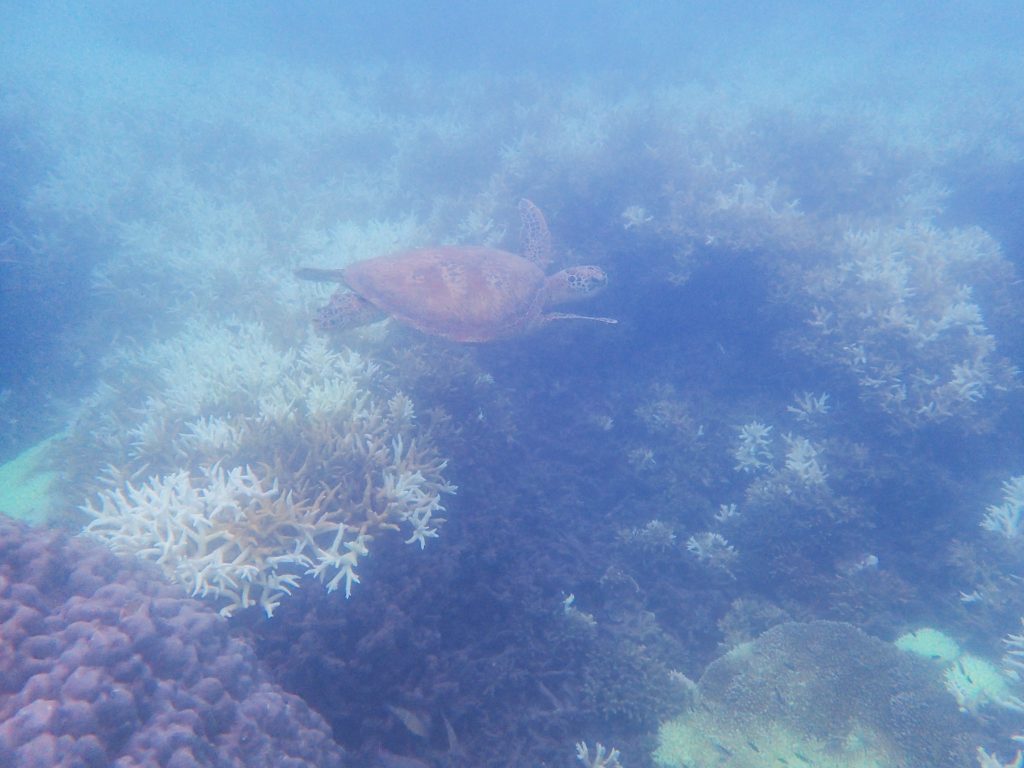
The turtle was not bothered by me and seemed oblivious to all the coral bleaching.
The creatures under-the-water last Sunday morning, they seem oblivious to the colour of the coral that was mostly stark white, some healthy chocolate brown (replete with symbiotic zooxanthellae/good microalgae), and some brown from infestations of macro algae smothering the corals.

To my eye, the fish and other creatures seemed randomly distributed, which is to say they could be found across the reef irrespective of the colour of the coral.
It was not at all how the BBC have described coral bleaching at the Great Barrier Reef – they have recently been using the terms ‘ghostly white’, ‘spooky white’, ‘like a graveyard’. These journalists are clueless (CLICK HERE).

Secret Cove a week ago was badly bleached – and it was teeming with life. But to know this, it is necessary to get under the water.
A big shout out to Jenn and the rest of the crew at Keppel Dive on Great Keppel Island (CLICK HERE). Thank you for the opportunity to dive so many coral reefs last weekend – thank you for your care and for finding the Epaulette shark at Secret Cove.
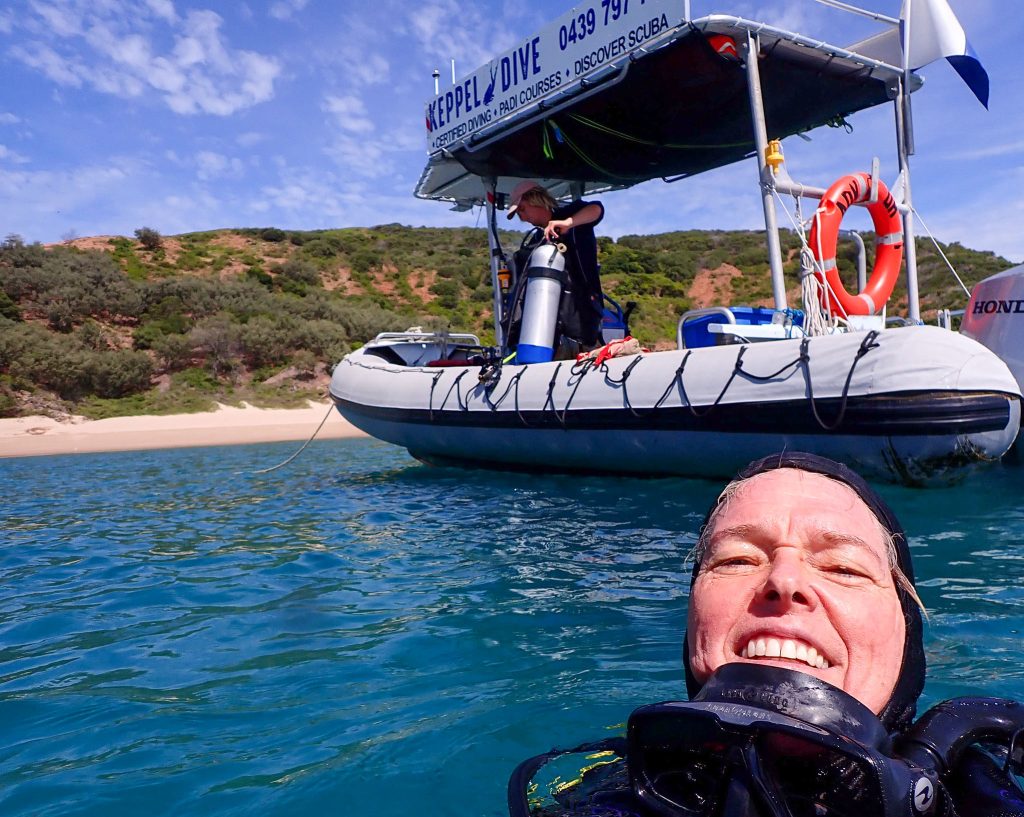
To know that many of the stark white corals are still alive it is necessary to observe them up close. For example, the brain coral (perhaps a Lobophyllia sp. or Caulastrea sp.) did look ‘ghostly white’ from a few metres away. But up close – after I reset my camera to take a macro – you can see that the polyps are still very much intact, that the polyps have a carpet-like texture concealing separate corallites.


We even found a Moray eel. I only managed to photograph its head, after waiting. Its long slender body hidden under the corals.
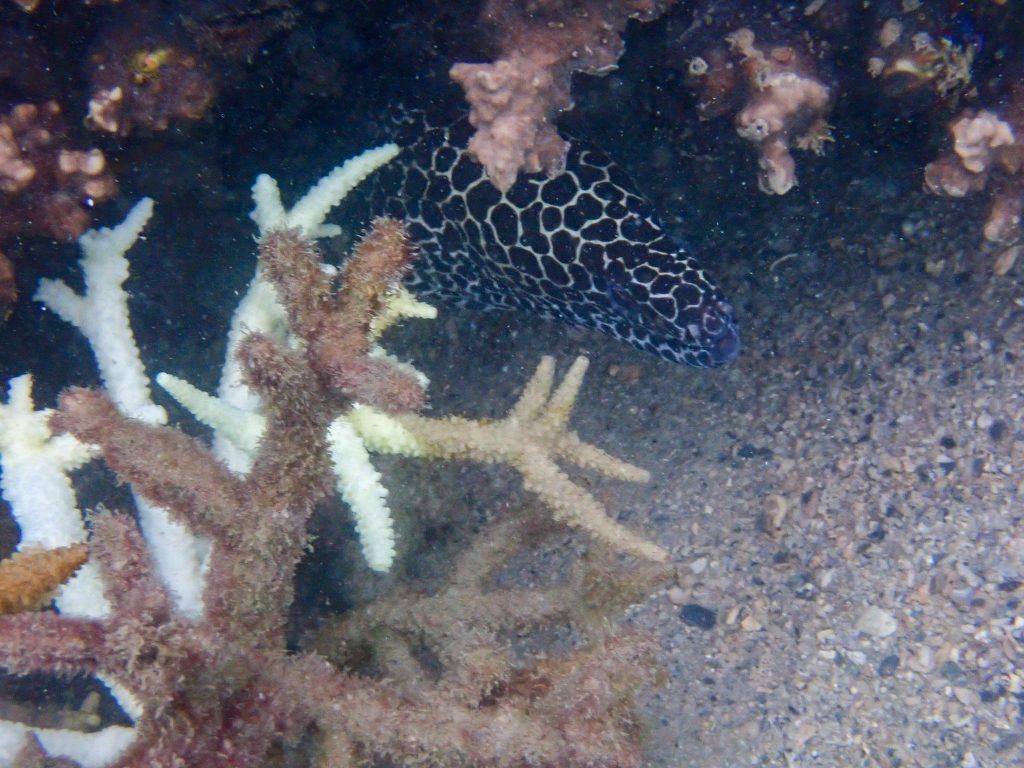
Secret Cove fringes Great Keppel Island, reportedly with some of the worst of the coral bleaching, considering the entire Great Barrier Reef this last summer.
The BBC also mentioned ocean acidification and high temperatures – unprecedented they claim. Again, they are just making stuff up.
I’ve noticed that the journalists and the scientists, from all sides of the political divides, increasingly just add to the established narratives rather than checking the data, or even visiting a coral reef. This makes me an outlier – relevant only because you are reading me. (For sure the institutions and sometimes even my colleagues and even social media want me cancelled so be sure to subscribe at my website for weekly e-news: CLICK HERE)
It is the case that our oceans are not acidic, not at all. I wrote about this in a chapter for ‘Climate Change, The Facts’ back in 2017 (CLICK HERE).
As for the water temperatures, this last summer was hot, but not exceptionally so.
I write this, not with reference to the wholly contrived coloured maps they show you on the nightly news often for the whole Earth and always showing continuous increase (as though there is never winter), but rather with reference to more reliable location specific temperature data for the Keppel Islands. For example, considering Australian Institute of Marine Science data for Square Rocks, and Bureau of Meteorology data for Rosslyn Bay, we can see that there is still a strong seasonal component to the temperature data and that this last summer temperatures were well within the expected seasonal cycle.
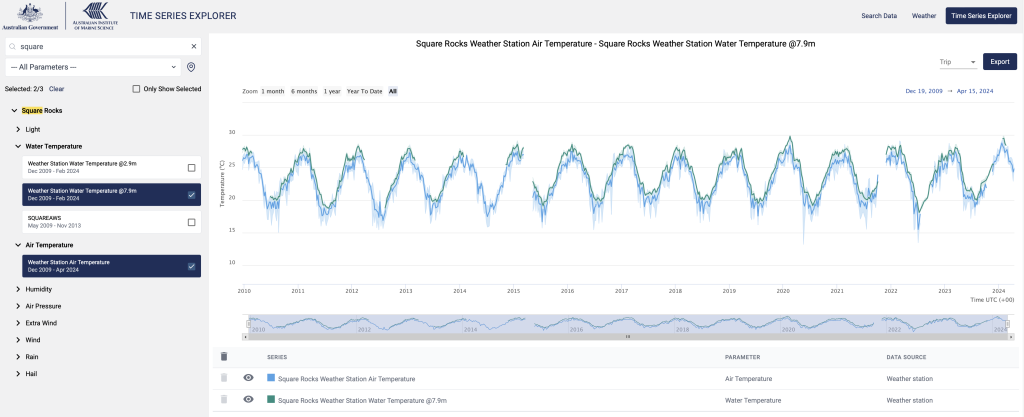

So, what caused the coral bleaching this last summer that has been so severe, particularly at the southern Great Barrier Reef, and particularly at the Keppel Islands?
The Moon has a particular influence on sea levels.
We see this not just in the daily and monthly cycles, but the Moon also causes the less well understood 18.6-year declination cycle.
The Moon takes a month to complete a revolution around the Earth. But it doesn’t follow the same path, moving above the Earth’s equator for two weeks and below the equator for two weeks of each month. The distance above and below the equator changes with this 18.6 year cycle. This is because as the Earth is tilted at 23.5 degrees relative to the Sun causing the seasons, the Moon is tilted at 5 degrees relative to the Earth, and every 18.6 years, the angle between the Moon’s orbit and Earth’s equator reaches a maximum that is the sum of Earth’s equatorial tilt (23°27′) and the Moon’s orbital inclination (5°09′) to the ecliptic. This is called major lunar standstill, and I define it as occurring when the distance that the Moon travels south is more than 28 degrees south each month.
While we may intuitively expect larger sea tides as the Moon approaches its maximum declination considering this 18.6-year cycle, because the gravitational forcing of the Moon is less well aligned with the gravitational forcing of the Sun on the Earth at this time, we see on average lower sea tides at least in the data for the nearby Rosslyn Bay gauge for the last few months.

I suspect that the bleaching at the Keppel Islands this last summer can be blamed on the Moon; specifically that the lower tides caused by Maximum Lunar Declination combined with a short period of clear skies and no winds caused the water to stay continuously warm for a longer period than usual, in a way that was catastrophic.
That is my hypothesis.
The popular claim, the consensus claim consistent with anthropogenic global warming theory that the atmosphere replete with greenhouse gases has been warming the ocean is not credible, at least not considering the location specific data for Square Rocks between North Keppel Island and Great Keppel Island. The available Australian Institute of Marine Science (AIMS) data shows that the water is consistently warmer than the air above it. As the water is consistently warmer than the air, it is not logical to suggest that the air is warming the water.
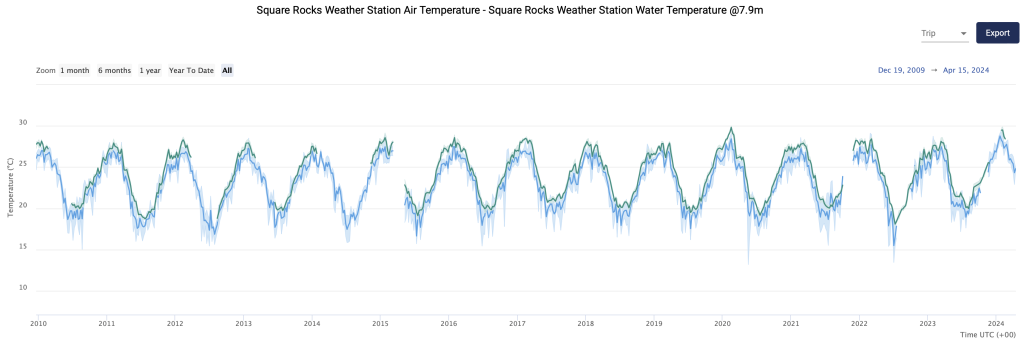
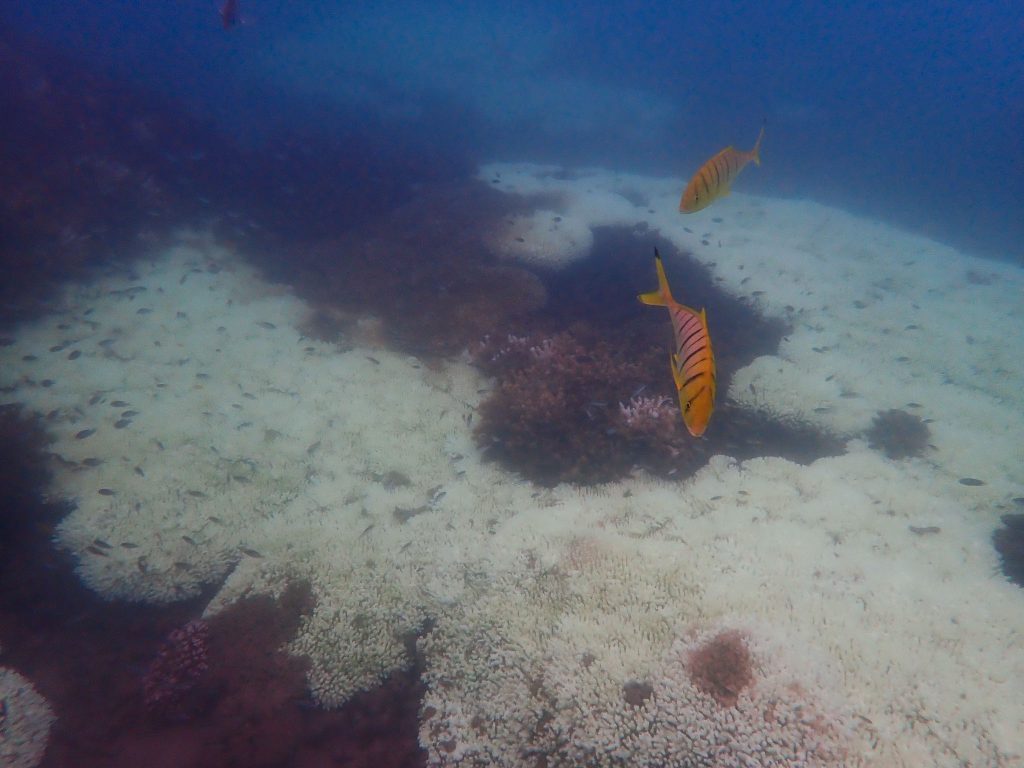
*** Notes/Key References
Dr Alison Jones has been monitoring coral cover across reef flats and slopes in the Keppel Islands for some years. If this work continues, we could know the extent of the recovery in numbers – measured. More information here: Jones & Berkelmans. Keppel Islands reefs: Baseline study 2008-2010. CLICK HERE.
There was significant reporting of coral bleaching at the Keppel Islands in 2006, corresponding with the last maximum lunar declination; more information here: Great Barrier Reef coral bleaching surveys 2006. GBRMPA Research Publication No. 87 CLICK HERE.
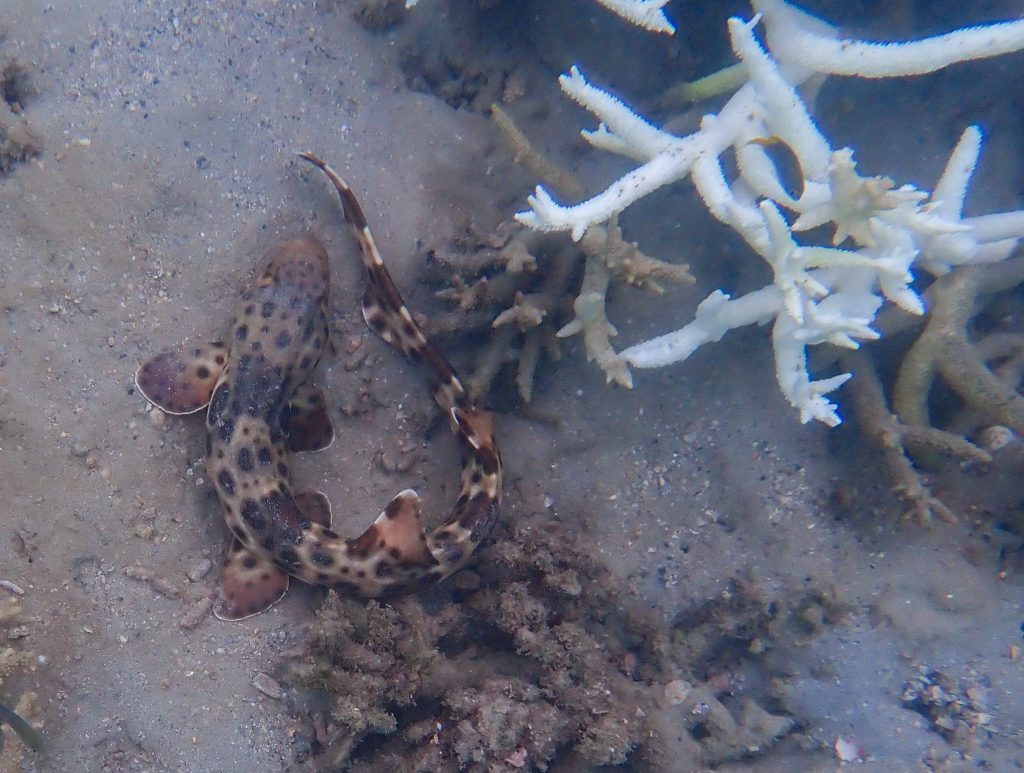
Understanding Lunar Declination …
Today, the Earth’s axis is tilted 23.5 degrees from the plane of its orbit around the sun. But this tilt changes. During a cycle that averages about 40,000 years, the tilt of the axis varies between 22.1 and 24.5 degrees. Because this tilt changes, the seasons as we know them can become exaggerated.
Every 18.6 years, the angle between the Moon’s orbit and Earth’s equator reaches a maximum of 28°36′, the sum of Earth’s equatorial tilt (23°27′) and the Moon’s orbital inclination (5°09′) to the ecliptic. This is called major lunar standstill. Around this time, the Moon’s declination will vary from −28°36′ to +28°36′.
“Because of the inclination of the Moon’s orbit with respect to the Earth’s equator, the Moon is above the horizon at the North and South Pole for almost two weeks every month, even though the Sun is below the horizon for six months at a time. The period from moonrise to moonrise at the poles is a tropical month, about 27.3 days, quite close to the sidereal period. When the Sun is the furthest below the horizon (winter solstice), the Moon will be full when it is at its highest point. When the Moon is in Gemini it will be above the horizon at the North Pole, and when it is in Sagittarius it will be up at the South Pole. Quoting from Wikipedia, CLICK HERE .
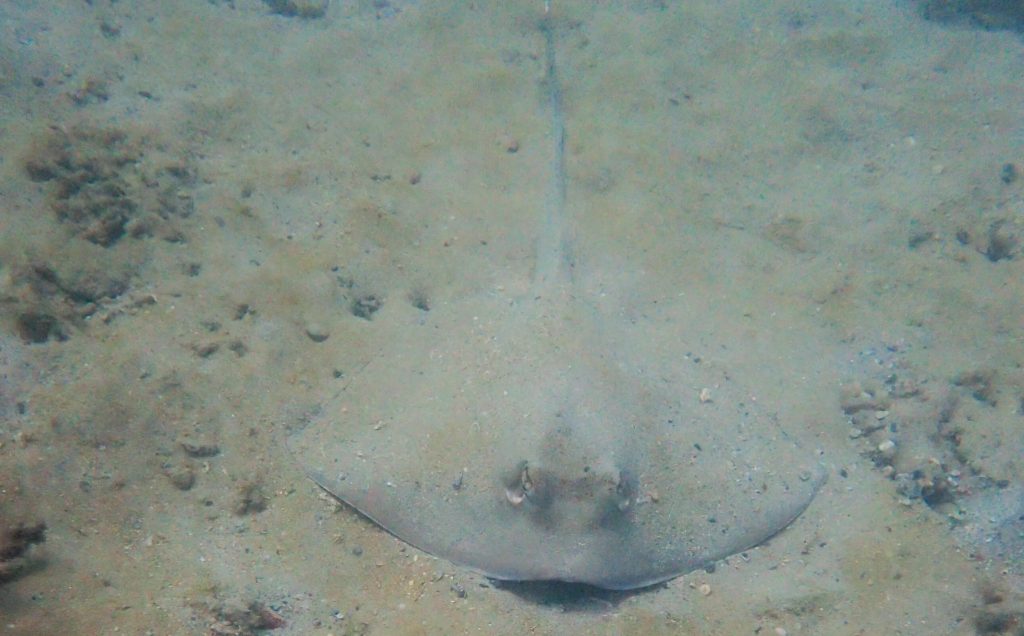


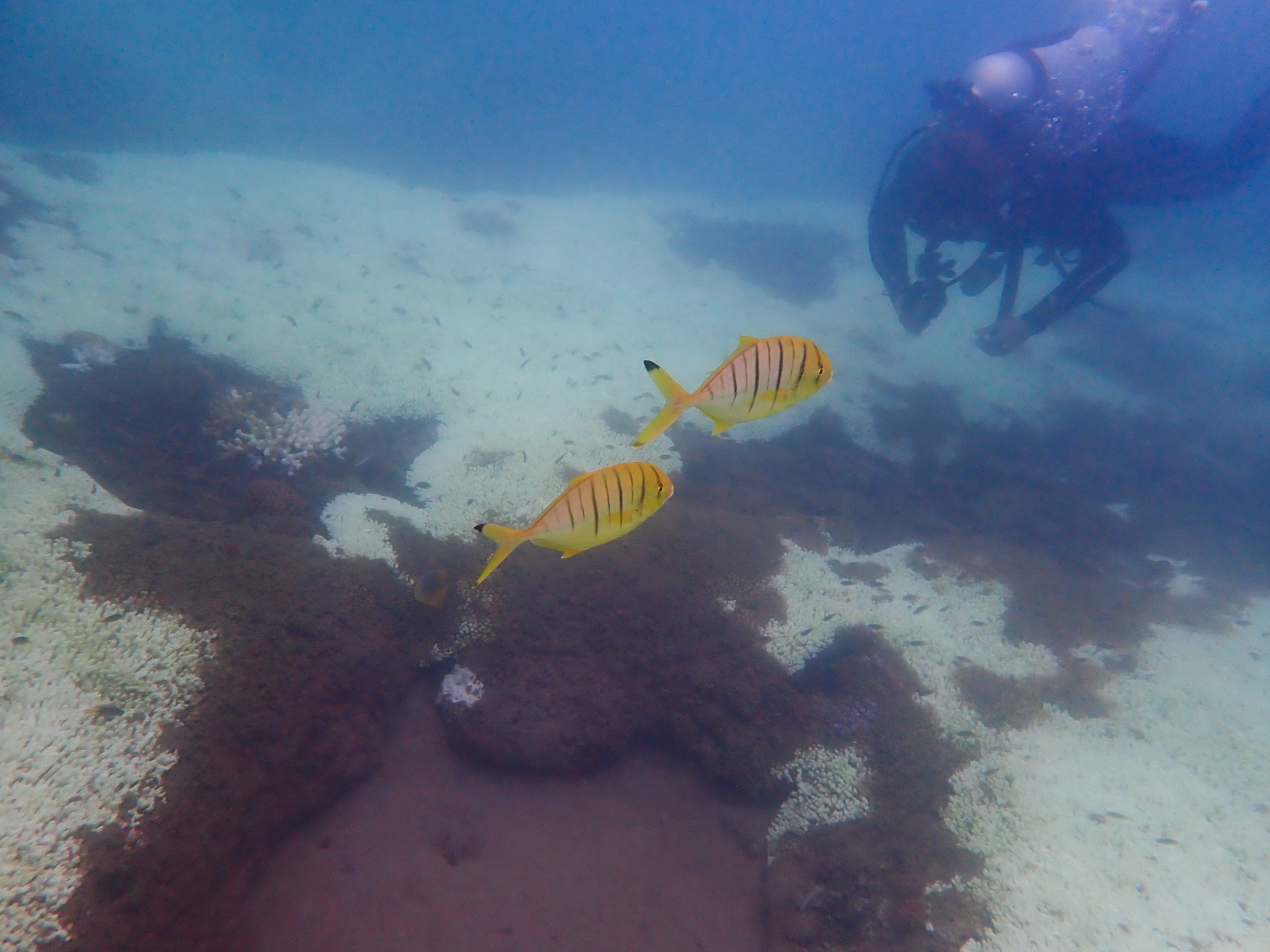
 Jennifer Marohasy BSc PhD is a critical thinker with expertise in the scientific method.
Jennifer Marohasy BSc PhD is a critical thinker with expertise in the scientific method.

Thankyou for your clear explanations.
Hi Jennifer,
I think you have nailed it.
Bleaching is the work of Mother Nature.
There are many variables in the game she plays,.. the Moon being significant one.
There are years when ours, and many others paddocks appear bleached.
The following may be a blaze of brilliant yellow/green as our Canola/ Cereals bloom.
Keep up the great work. .
Jennifer Thank you very much for the information! I doubt that it will make much difference to the MSM narrative because clarity does not fit the agenda! There has to be an irreversible CRISIS so that is what will be reported and it will be all gloom and doom!
Thanks for the detailed information..
If only we could get this truth from media!
Interesting when looking at tidal stream in the Torres Strait for last year is not what is normal-equalizing tide run from west very prominent and backs up on flood tide from east causes big high tides-also causes poor tide flow stagnant water on reef tops and water sitting for longer periods in the shallows-because east coast runs in a north west direction same occurs further south-tis why bleaching occurs mainly in February and march but after the equinox when flooding tide from east starts to predominate nutrients and cooler water from the east fix the problem-why this year has been a more extreme version of what happens annually should be answerable by the publisher of the QLD tide book and is out of my expertise
Thank you Jennifer
You’ve reminded us how Science should be approached…your passion for Truth is inspiring!
Helen Mathieson, if you would like to see more truth from media, read this.
https://adstandards.com.au/wp-content/uploads/2024/04/Final-Case-Report-0032-24.pdf
Jennifer, you are inspiring. It’s a pity that AIMS scientists and even educated media journalists have NOT learnt how to think critically. You present all the relevant data and your hypothesis sounds credible to me. Planetary influences must be considered when trying to understand climate change. The declination of the moon must obviously interact with our planet, affecting tides which in turn affect the corals. And if AIMS data says the surface water temps are warmer than the air above it, then even the dullards in the consensus science community must understand that the atmosphere is NOT warming the ocean. Atmospheric levels of CO2 and other greenhouse gases are not the only factor to consider when trying to explain climate change.
Jennifer, you are absolutely inspiring!
BrainM – what a shocker about the Ad Standards Community Panel support suppressing FACTS!
Impressive thinking, Jennifer. A far more reasoned explanation of coral bleaching than the mindless mantra of global warming emanating from ‘climate scientists’ and much of the media.
Thanks again Jen for your scientific evidence and observation.
The only way to find the answer.
After all these years you still don’t get heat exchange as you repeat that old myth, “As the water is consistently warmer than the air, it is not logical to suggest that the air is warming the water.”
The atmosphere slows down the dissipation of heat from the ocean. A warmer atmosphere will reduce the dissipation rate compared to a colder atmosphere.
The heat dissipation rate is dependant upon the heat difference between the two bodies. This is basic, well understood physics.
A child can understand that a COLD blanket will reduce the heat loss from your WARM body. A WARM blanket will slow the heat loss from your WARM body even more.
I hope you can stop repeating your flawed logic.
*******
Thanks Brendon. I’ve never had a cold blanket.
And after all the years I rather better understand the note that I received from Christopher Game some few posts ago. He wrote:
“In thermodynamics, heat transfer is one of just three main forms of energy transfer: as heat, as work, and accompanying matter transfer. According to good authority (Max Born, Edward Guggenheim), energy transfer accompanying matter transfer cannot be resolved into heat and work components, at least in classical thermodynamics. In non-equilibrium thermodynamics, people try to do it, but they are probably over-optimistic.
“Heat transfer is by conduction, radiation, and friction.
“The main energy transfer from ocean to atmosphere is accompanying matter transfer, perhaps about 4/5 of the net total transfer, known as evaporation (this is the principal component feedback of the process considered as caused by added CO2).
“Smaller amounts are by radiation, conduction, and friction. Energy transfer, through the kinetic energy of wind, does some mechanical work on the ocean, which eventually appears as heat in the sea (such transfer is sometimes said to be a reason for saying that the earth’s energy transport process is like a “heat engine”; I don’t like that story; I think it is too metaphorical: the energy ends up as heat if you consider the wave motion to be frictional.) There will also be simple friction between wind and wave; I don’t know how this pans out as a net frictional transfer one way or the other.
“Jennifer is wise to say that “this is certainly the case in the tropics”. That says the main thing. There is also a small contributory back transfer as heat from atmosphere to sea or ice in the polar winter. And yes, importantly, it is “driving atmospheric circulation” (classified in thermodynamics as convective circulation of matter).
“It is also important to remember so-called ‘back radiation’. Radiative transfer between two bodies is the net of two one-way transfer components, according to the Helmholtz reciprocity principle. The net is always from the hotter to the colder body; this is part of the burden of the second law of thermodynamics, referring to radiation. The mainly relevant part of the atmosphere is the troposphere, which is mainly colder than the surface. (As a fine point, it is not just the temperature of the immediately contiguous atmosphere; the atmosphere is semi-transparent to infrared radiation, so that its whole temperature and moisture profile is to be considered.) The overall net radiative transfer between condensed matter surface and atmosphere pans out to be about perhaps 3% of emitted infrared radiation from surface to atmosphere. We cannot be sure of the exact amount, because it is hard to define or know the temperatures of the surface and of the nearly contiguous atmosphere, and other things, such as the emissivity of the surface. ends comment from Christopher.
Cheers, Jennifer
PS. More here https://jennifermarohasy.com/2024/04/water-temperatures-central-great-barrier-reef-arent-the-oceans-warming/
Hi Jennifer,
Greetings from Versailles (France). Thank you for your many smart articles, it is really inspiring.
I discovered another approach to climate through this late French climatologist https://www.amazon.fr/Global-Warming-Reality-Erring-Climatology/dp/354023909X and since then i am trying to use my brain and not follow the flock… and so, i read you!
Again, many thanks!
Greg
You say, “I’ve never had a cold blanket.”. Are you being pedantic?
A blanket (at room temp of 20°C) would be colder than your external body (eg 32°C). It’s purpose is to reduce the heat loss. The difference between these two bodies is 17 degrees determines how rapidly your body loses heat.
A warmer blanket (30°C) would still be colder than your body (32°C) but it will reduce the rate of heat loss because the temperature difference is less.
The warmer blanket reduces the heat loss.
A warmer atmosphere reduces the Earth’s heat loss.
“To understand the variability of the Earth’s climate system it is important to estimate the contributions of different terms in Earth’s heat balance. In Figure 3 we update earlier estimates [Levitus et al., 2001] of the different components of Earth’s heat balance. In addition to our new ocean heat content estimate, an additional term in the Earth’s heat balance now available is the variability of the heat content of Earth’s lithosphere. Beltrami et al. [2002] used temperature profile data from boreholes to make this estimate. They estimate that Earth’s continents warmed by 0.9 × 1022 J during the past 50 years. This value is of the same order as the warming of the Earth’s atmosphere during this period and the heat of fusion associated with possible melting of the Antarctic continental glacier assuming an estimated maximum melting rate [Houghton et al., 2001]. Inspection of Figure 3 indicates that the world ocean is responsible for approximately 84% of the estimated possible total increase of heat content of the Earth system for 1955–1998.”
https://agupubs.onlinelibrary.wiley.com/doi/full/10.1029/2004GL021592
Thanks Brendon, for taking the time to comment. But I think you are mostly just repeating popular nonsense.
The atmosphere is not like a blanket at all, and it is not preventing evaporation from the oceans that is the major source of energy transfer.
The extent of this exchange, through evaporation, it changes with the latitude and the seasons that affect cloud cover that affects at the amount of incoming solar radiation to the oceans (and the land) and the potential for evaporation from the oceans, and so on.
Spend time in the tropics on the ocean and you will see how the Anvil clouds form, and then there are the cyclones.
As regards concentrations of carbon dioxide, at what altitude and how do they warm? At what altitudes and how can they cool? :-).
Of course, I am eluding to the thermal structure of the atmosphere that is complex, and not at all like a blanket. :-).
“Geothermal activity cannot account for recent ocean warming. Earth’s oceans have warmed. In fact, ocean warming is a major driver of sea level rise, because water expands as it warms, according to NASA. [https://climate.nasa.gov/vital-signs/ocean-warming/?intent=121]
However, the oceans are not self-heating. They are warming for the same reason the rest of the Earth is warming – greenhouse gas emissions, Tim Boyer, a National Oceanic and Atmospheric Administration oceanographer told USA TODAY.
“The thermal energy increase in the upper ocean – as well as the atmosphere – seen over the last 60 years is almost exclusively due to incoming solar radiation and … heat energy trapped within the Earth’s system,” he said in an email.
The oceans have absorbed about 90% of Earth’s “excess” heat associated with greenhouse gas emissions, he said. [https://www.ncei.noaa.gov/news/ocean-heat-content-rises]
While geothermal energy does heat Earth’s oceans, it cannot explain the magnitude or distribution of observed ocean heating, according to researchers.
“We know quite well that geothermal activity has not been a substantial driver of global warming,” Kyle Armour, a physical oceanography professor at the University of Washington, told USA TODAY in an email. “Geothermal activity has not been changing rapidly enough to cause the climate warming we’ve seen.”
Further, observed ocean warming is mostly occurring near the surface, not in the deep ocean where geothermal activity takes place, Timothy DeVries, a professor of ocean science at the University of California Santa Barbara, told USA TODAY in an email.
“If geothermal heating were responsible for ocean heating, then most of the ocean warming would be concentrated in the deep ocean,” he said. “However, ocean temperature observations show that the vast majority of ocean warming has occurred near the surface. This shows the ocean is being warmed from above, said DeVries.”
https://www.usatoday.com/story/news/factcheck/2023/01/20/fact-check-global-warming-caused-co-2-not-ocean-warming/11066134002/
Jen, “Of course, I am eluding to the thermal structure of the atmosphere that is complex, and not at all like a blanket. :-).”
elude
/ɪˈl(j)uːd/
verb
gerund or present participle: eluding
1.
escape from or avoid (a danger, enemy, or pursuer), typically in a skilful or cunning way. “he tried to elude the security men by sneaking through a back door”
“You say, “I’ve never had a cold blanket.”. Are you being pedantic?”
Hey brenny, perhaps Jennifer has an electric blanket.
Then this regurgitated by adam:
“Geothermal activity cannot account for recent ocean warming. Earth’s oceans have warmed. In fact, ocean warming is a major driver of sea level rise, because water expands as it warms, according to NASA. [https://climate.nasa.gov/vital-signs/ocean-warming/?intent=121]
However, the oceans are not self-heating. They are warming for the same reason the rest of the Earth is warming – greenhouse gas emissions, Tim Boyer, a National Oceanic and Atmospheric Administration oceanographer told USA TODAY.
I pose the same question as I posed to kev who no doubt is boning up on the facts as we write: how do CO2 emissions from fossil fuels heat the oceans?
As for ocean warming I again refer to the 30 year BOM study of the Pacific Islands which shows NO ocean warming trend:
http://www.bom.gov.au/oceanography/projects/spslcmp/data/monthly.shtml
Anthropogenic Global Warming, AGW, is a failed theory run by grifters, ideologues and useful idiots. Which are you adam?
@cohenite
Hey condescending cherry picker.
https://www.ncei.noaa.gov/access/global-ocean-heat-content/
@Jennifer
A molecule of water, when it evaporates, doesn’t just jump to the top of the atmosphere.
A molecule of water, when it evaporates, will warm the atmosphere (and cool the ocean), which in turn reduces the heat loss rate because the system becomes closer to equilibrium.
Both the atmosphere and the oceans are warming. You can’t escape this fact by inventing magic.
*****
Thanks Brendan. Yes. The Sun warms the ocean, that warms the atmosphere. Now we are getting somewhere. :-).
For a good 60 years or so the overall trend was one of cooling, for the last 60 years (while there has been much regional variability) the overall trend has been warming.
There are cycles within cycles. These are not only affected by solar cycles that can also effect cosmic ray flux, but also ocean circulation cycles likely affected by our solar systems changing Barycentre. But this post was actually about a much short cycle, it was about the 18.6 year lunar declination cycle. I was wondering if you had any comment on that?
Cheers, Jennifer
When fluids (liquids and gases) are heated, they expand and therefore become less dense. Any object or substance that is less dense than a fluid will float in that fluid, so hot water rises (floats) in colder water. When fluids are cooled, they contract and therefore become more dense. MAYBE THIS EXPLAINS WHY THE SURFACE LAYERS ARE WARMER?
Jennifer, I am enjoying the frantic “explanations” of your critics. You are definitely winning in my humble opinion. Whilst I am not a climate expert, I understand there are many complex drivers of climate, and it seems to me that those who choose to focus on CO2, do not fully understand this. And of course, your investigations of temperature measurement and adjustments to these should not be dismissed. Now I am off to find a cold blanket. 😄
Re “cycles within cycles” Some corals are fluorescent and some bioluminescent. In early 2024 lunar Perigee closest approach was close to the dark days of the new moon. Making it very dark apart from star light. Did this change what predators see? A long strech perhaps but Gamma radiation from the moon being from cosmic ray impacts not solar reflection would get mostly absorbed by the atmosphere. The Cherenkov radiation produced however on the otherwise dark night could make the coral visible to predators in a way the sunlight reflected from the moon does not.
I like apples brenny not cherries. That NOAA junk is addressed here; first thing to note is their graph is in joules which produces a much steeper and therefore alarming increasing graph than temperature:
https://australianclimatesceptics.com/?p=957
Hey Conny,
“The numbers of climate sceptics are dwindling. But they remain a noisy and at times powerful minority that continues to have political influence. This group is unmoved by the near-universal agreement among scientists on the reality and impact of climate change.”
https://www.usc.edu.au/about/unisc-news/news-archive/2022/september/inside-the-mind-of-a-sceptic-the-mental-gymnastics-of-climate-change-denial
Hi Alison,
It is interesting why people believe what they do. And how other people characterise it.
I clicked across to your link, and some way done it listed five overarching themes that can variously be used to justify ‘scepticism’ of ‘climate science’.
The very first one is:
1. faith in alternative science – they offered answers such as “real science concerning solar activity and other factors such as planetary tides” to explain their rejection of climate science
It is interesting that the word ‘faith’ is used here, and ‘alternative’. Certainly, I am a big fan of Thomas Kuhn’s 1964 book about the structure of scientific revolutions and how different paradigms are incommensurate. Written long before the current obsession with carbon dioxide as a driver of climate change, I think it explains why after one begins to fit the puzzle together in a particular way it can be very difficult to change ways of thinking. And how despite, despite human-caused global warming being very much a failed paradigm, it hangs on. There is no doubt that dissent is not allowed, and the hard core of the theory flaky, as demonstrated through the recent defamation trial against Mark Steyn, available as a podcast series of about 15 hours here, https://climatechangeontrial.com
Meanwhile ‘planetary tides’ by which I would assume we can include gravitational forcing by not just Saturn and Jupiter, but also the Moon, is real and measurable.
And by ‘solar activity’ I assume we can include not just the sunspot cycle that is also measurable but changes in solar magnetism that affect comic ray flux that affect cloudiness.
The current paradigm (catastrophic anthropogenic global warming driven by carbon dioxide CAGW) cannot explain the 120 metre rise in sea levels since the last ice age (just 16,000 years ago) or the more-or-less 2 metre drop in sea level at the Great Barrier Reef since the Holocene High Stand some 5,000 years ago, or even why this last summer was so very wet here in Queensland.
Unless you are terrified of the prospect of being unemployable and of being despised by your colleagues, there is good reason to consider alternative explanations.
To be clear, it is no longer acceptable even on the right of politics to be sceptical of carbon dioxide as a driver of climate change, as I explain in my blog series following the ARC conference. Indeed, there is much pressure now for those on the right of politics to also go along with the central premise of the current CAGW paradigm, even if they continue to deny the recent coral bleaching and also the terrible impact of cyclone Kirrily. More about this here: https://jennifermarohasy.com/2023/11/political-and-natural-hazards-arc-part-3/
Cheers, Jennifer
Hi Alison; wow, a climate action survey; I bet they surveyed Greenpeace. Don’t you worry sweetheart, when the lights go out those deniers will multiply like bunnies in a paddock; and go out they will if blackout bowen and albo have their way.
But seriously science is not based on a ‘consensus’. Scientists, real ones that it, don’t wake up and take a vote about things. One of the bedrock principles of science is something called the White Swan principle which you can read about on Jennifer’s site:
https://jennifermarohasy.com/2011/03/garnaut%e2%80%99s-second-update-sceptics-are-the-white-swans/
It only takes one contrary evidence to disprove a theory. With AGW it is not so much about finding a contrary bit of evidence but finding one supporting bit of evidence or one validated prediction. So, there’s a little task for you Alice: find a prediction about AGW which has come true; you know like the world ending or it never raining again (h/t timmy flannery)
The wet weather in Queensland might have been a result of the current mania for cloud-seeding. Globally we’ve had reports of constant chemtrails being observed from the USA, and across Europe. Less so in Africa, but the middle east is a distinct possibility. Satellite imagery frequently shows persistent lines crossing weather fronts above the clouds. The companies doing this are for hire. It’s not a fantasy. Weather warfare is becoming apparent, and seems to be largely dismissed, as not enough people look up!
I have thousands of photos from the UK and Ireland as evidence. It has also been admitted by government agencies. We are barely scraping the surface for any investigation or analysis of what is being done to the atmosphere or the consequences for rainfall content and the impact on agriculture and our food.
How does Aluminium get into the snow on Mount Shasta, for example? Dumping fly ash up there should be criminally penalised. Thoughts, anyone?
https://i.postimg.cc/mD94PLnp/Screenshot-2024-05-01-145417.jpg
You can’t dispute facts:
https://www.aims.gov.au/sites/default/files/2024-04/FINAL-Aerial%20Bleaching%20GBR2024Report_AIMS_Final_15Apr2024.pdf
Thermal stress started building in late December through January and again in late February until the middle of March, throughout all three regions of the GBR. Reef waters accumulated heat stress throughout the summer, as maximum Degree Heating Weeks (DHWs) were reached on the 8th and 15th of March 2024 in the Southern and Central GBR and the 21st of March 2024 in the Northern GBR. The most intense and prolonged heat stress occurred at inshore reefs in the Southern GBR, with heat stress exposure peaking at 2.3-2.5°C above historical summer maxima and leading to an accumulation of heat stress up to 12.0 – 15.5°C-weeks (DHWs; estimated by the US National Oceanographic and Atmospheric Administration (NOAA) NOAA Coral
Reef Watch Daily 5km Satellite Coral Bleaching Heat Stress Degree Heating Week Product (Version 3.1)) at surveyed reefs, reaching the highest levels to date in the satellite record on the GBR.
This prolonged heat exposure has caused mass bleaching of coral reef communities observed within all three regions of the Great Barrier Reef. The combination of aerial (Images 1-4) and in-water surveys in 2024 confirm a mass bleaching event, with prevalent and extreme bleaching observed at multiple reefs in all 3 regions of the Great Barrier Reef Marine Park.
This is the fifth mass bleaching event to occur since 2016 and the seventh mass bleaching event on the GBR since 1998.
Aerial surveys are a crucial tool to assess the prevalence and spatial extent of coral bleaching across the large GBR ecosystem and were conducted in 2024 by trained observers from the Great Barrier Reef Marine Park Authority and the Australian Institute of Marine Science from both helicopter and fixed-wing airplanes.
In 2024, 75% of the reefs surveyed during the aerial surveys across the entire Reef experienced heat stress capable of causing coral bleaching (>4°C-weeks to 8°C-weeks) in 2024. The spatial footprint and intensity of thermal stress is increasing across the GBR, with 46% of reefs
exposed to the highest maximum DHW level ever experienced during the 2024 summer, predominantly in the Southern and Central GBR. In 2016 and 2017, these records occurred on less than 20% of reefs in the Central and Northern GBR.
Barbara Sheppard, I am enjoying the frantic “explanations” from Jennifer to explain the coral bleaching that was widely predicted by the scientific community months ago. Whilst I am not a climate expert, I understand there are many complex drivers of climate, and it seems to me that those who choose to focus on CO2, are supported by the fossil fuel industry. And of course, Jen’s hastily prepared “hypothesis” will not be dismissed by her followers. Now I am off to read about the record global temperatures last month (again).
Hey steve, what’s causing the heating, which seems to very localised?
Thanks Alison and Steve
It is useful to consider full cycle lengths. So 18.6 years when we are considering lunar declination, and perhaps more than the last few decades if we are considering medium term trends.
It is possible to go back more than 100 years with the instrumental records as I show in this blog post from some years ago, https://jennifermarohasy.com/2019/08/lady-elliot-just-a-hot-flush/
Considering the longer temperature record (unhomogenized, that is before the Bureau remodel it) there was cooling to about 1960. And if you skip across to the link you will also find this:
“Considering the longer records within the 300 km radius (of Lady Elliott Island), maximum temperatures have sometimes fluctuated by more than 2°C within a few years. This is evident from the detail in the individual series in Figure 3. The more than 2°C variation in temperatures as measured at Gayndah between 1900 and 1904, for example, is more than the overall warming trend at Lady Elliot of 1.95°C per hundred years since 1940.
Maximum temperatures for Gayndah and Bundaberg spiked in 1915, as they did for all the other stations recording within a 300 km radius of Lady Elliot Island at that time.
So, we can perhaps assume it was also a relatively hot year at Lady Elliot Island … back in 1915. Perhaps it was as hot back then as it is now, which is quite hot considering the longer records. Then again the spike may have been a consequence of the land drought, and places like Sandy Cape Lighthouse and Lady Elliott less affected. There is no mean annual maximum value for Sandy Cape Light House (number 39085) for 1915 because of missing values … but these could be infilled (using regression and/or an artificial neural network), to better estimate the likely temperature history for this region over land and also sea. Ends.
… “infilled (using regression and/or an artificial neural network), to better estimate the likely temperature history”…
Reads like homogenisation to me.
BoM does not remodel data, it homogenises data in an internationally approved process.
“Anyone who thinks they have found fault with the Bureau’s methods should document them thoroughly and reproducibly in the peer-reviewed scientific literature. This allows others to test, evaluate, find errors or produce new methods.
This process has been the basis of all scientific advances in the past couple of centuries and has led to profoundly important advances in knowledge. Abandoning peer-reviewed journals in favour of newspaper articles when adjudicating on scientific methods would be profoundly misguided.”
https://theconversation.com/no-the-bureau-of-meteorology-is-not-fiddling-its-weather-data-31009